
USS Enterprise, the longest and the oldest nuclear-powered aircraft carrier in the US fleet, set off for its final voyage.
The ship with more than 4,000 crew members has been a part of history over the past 50 years. It was involved in several wars and played a prominent role in the Cuban missile crisis. It also served as a spotter ship for John Glenn's historic orbit of Earth.
Let's take a look at its glorious 50-year journey
Click on NEXT to go further...
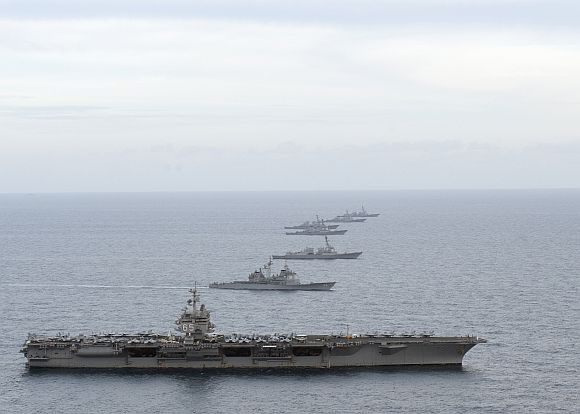
In 1954, the US Congress authorised the construction of the world's first nuclear-powered aircraft carrier, the eighth US ship to bear the name Enterprise.
The giant ship was to be powered by eight nuclear reactors, two for each of its four propeller shafts. This was a daring undertaking for never before had two nuclear reactors ever been harnessed together.
As such, when the engineers first started planning the ship's propulsion system, they were uncertain how it would work, or even if it would work according to their theories.
...

Materials used by the shipyard included 60,923 tons of steel; 1507 tons of aluminum; 230 miles of pipe and tubing; and 1700 tons of one-quarter-inch welding rods.
The materials were supplied from more than 800 companies. Nine hundred shipyard engineers and designers created the ship on paper, and the millions of blueprints they created, laid end-to-end, would stretch 2400 miles, or from Miami to Los Angeles.
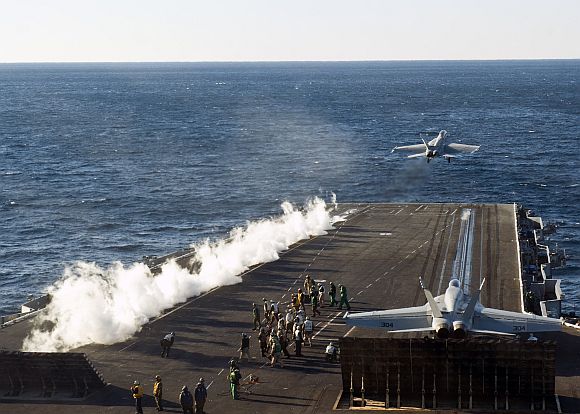
Three years and nine months after construction began, Enterprise was ready to present to the world as "The First, The Finest" super carrier.
The newly-christened Enterprise left the shipyard for six days of builder and Navy pre-acceptance trials.
Its escort during the trials, destroyer Laffey, sent this messa#8805 "Subject: Speed Trails. 1. You win the race. 2. Our wet hats are off to an area thoroughbred." When the Big "E" returned to port, the then Chief of Naval Operations, Admiral George W Anderson, Jr, stated enthusiastically, "I think we've hit the jackpot."
...

After years of planning and work by thousands the day finally arrived.
At the commissioning of Enterprise, the world's first nuclear-powered aircraft carrier, the then Secretary of the Navy John B Connally Jr called it a worthy successor to the highly decorated seventh USS Enterprise of World War II.
In October 1962, Enterprise was dispatched to its first international crisis. Enterprise and other ships in the Second Fleet set up quarantine of all military equipment under shipment to communist Cuba.
The blockade was put in place on October 24, and the first Soviet ship was stopped the next day. On October 28, Soviet leader Krushchev agreed to dismantle nuclear missiles and bases in Cuba, concluding the Cuban Missile Crisis, the closest the US and USSR have ever come to nuclear war.
Click on NEXT to go further...

The aircraft carrier made its second and third deployments to the Mediterranean in 1963 and 1964. During the latter deployment, on May 13, 1964, the world's first nuclear-powered task force was formed when USS Long Beach (CGN 9) and USS Bainbridge (DLGN 25) joined Enterprise.
On July 31, 1964, the ships were designated Task Force One and, leaving Gibraltar, sailed on Operation Sea Orbit, an historic 65-day, 30,216-mile voyage around the world, accomplished without a single refuelling or replenishment.
CVAN 65 entered the dry-dock at Newport News Shipbuilding and Dry Dock Company on Nov. 2 for its first refueling and overhaul. The Enterprise returned to Norfolk Naval Station July 9, 1965.
...

The "Big E" transferred to the Pacific's Seventh Fleet in November 1965 and became the first nuclear-powered ship to engage in combat when it launched bomb-laden aircraft in a projection of power against the Viet Cong near Bien Hoa on December 2.
Commanding Officer of "Screaming Shrikes" of Attack Squadron (VA) 94, Cmdr O E Krueger, became the first pilot of Carrier Air Wing (CVW) 9 to enter combat.
USS Enterprise launched 125 sorties on the first day, unleashing 167 tons of bombs and rockets on the enemy's supply lines. The next day it set a record of 165 strike sorties in a single day. By the end of the year USS Enterprise lost four Phantoms, two Skyhawks and one Vigilante. Three pilots and one flight officer were lost over North Vietnam.
...
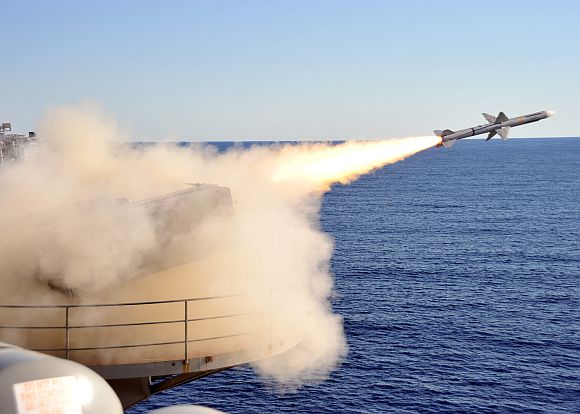
In the fall of 2001, Enterprise aborted her transit home from a long deployment after the terrorist attacks in New York City and Washington DC, on September 11, and steamed overnight to the North Arabian Sea.
In direct support of Operation Enduring Freedom, Big 'E' once again took its place in history by becoming one of the first units to respond in a crisis with its awesome striking power.
Enterprise expended more than 800,000 pounds of ordnance during the operation.
The ship returned to home port at Naval Station Norfolk November 10, 2001.
...
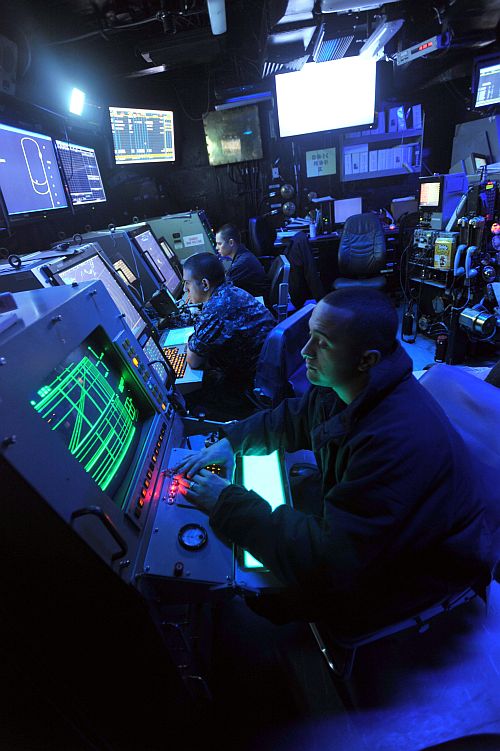
Following several more deployments and an extended shipyard period that began in 2008, Enterprise embarked on its 21st deployment in January 2011, during which the carrier supported operations Enduring Freedom, New Dawn and multiple anti-piracy missions.
During its six-month tour of duty, Big 'E' made port visits to Lisbon, Portugal, Marmaris, Turkey, the Kingdom of Bahrain and Mallorca, Spain. Big 'E' became the fourth aircraft carrier in naval history to record 400,000 arrested landings on May 24, 2011.
The milestone landing was made by an F/A-18F Super Hornet piloted by Lt. Matthew L Enos and Weapon System Officer Lt. Cmdr Jonathan Welsh from the Red Rippers of Strike Fighter Squadron (VFA) 11. On November 25, 2011, Big 'E' celebrated its 50th birthday, making the carrier the oldest active duty ship in the US Naval fleet.
...

Enterprise STATS:
Builder: Newport News Shipbuilding and Dry Dock Co., Virginia
Ordered: November 15, 1957
Number of Designers: 915
Number of Drawings Made: 16,100
Miles of Blueprints Made: 2,400
Keel Laid: February 4, 1958
Launched: September 24, 1960
Commissioned: November 25, 1961
Click on NEXT to go further...
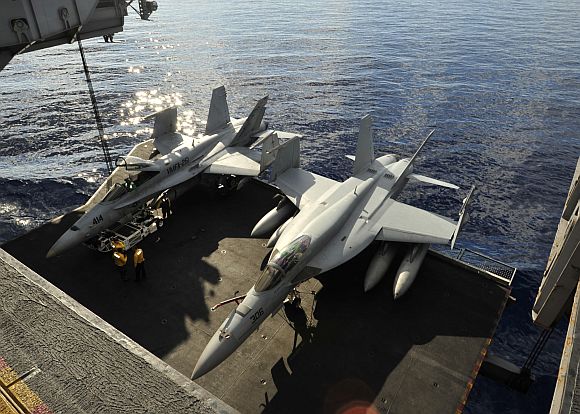
More Enterprise STATS:
Maiden Voyage: January 12, 1962
Original Cost to Build: $451.3 million
Horsepower: 200,000+
Top Speed: 30+ knots
Length: 1,123 feet
Beam: 257 feet
Height (Keel to Mast): 250 feet
Click on NEXT to go further...
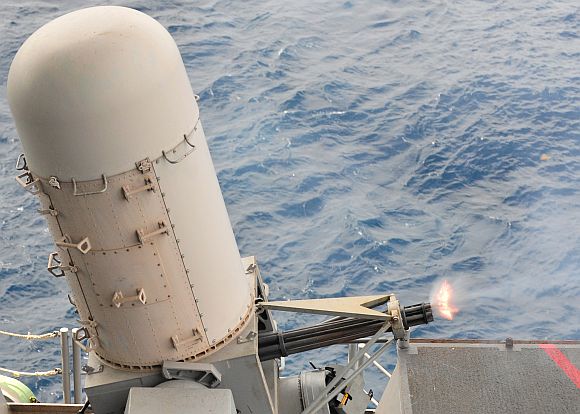
More Enterprise STATS:
Number of Nuclear Reactors: 8 (Lifespan around 20 years)
Shafts: 4
Propellers: 4 (32 tons each)
Rudders: 4 (35 tons each)
Anchors: 2 (30 tons each)
Length of Ventilation: About 37 miles
Length of Electrical Cables: About 625 miles
Water Distillation Plant Capacity: 350,000 gallons daily
Click on NEXT to go further...
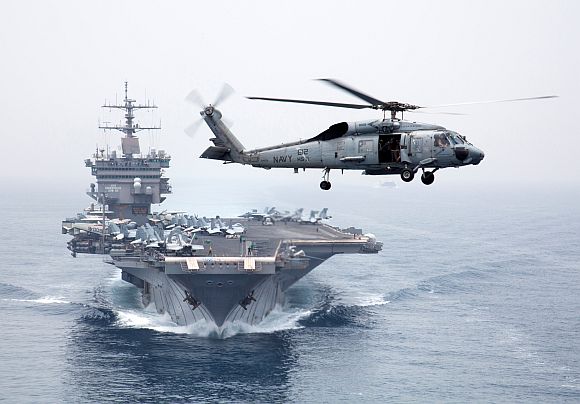
More Enterprise STATS:
Water Displacement: 94,781 tons
Number of Compartments: 3,500+
Aircraft Capacity: 60+
Flight Deck Area: 4.5 acres
Hangar Bay Area: 3.5 acres
Click on NEXT to go further...
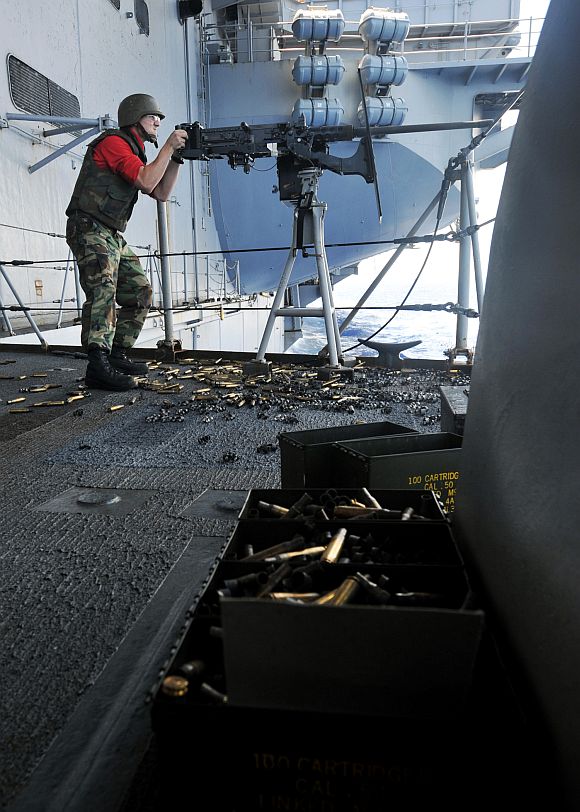
More Enterprise STATS:
Number of Catapults: 4 (steam)
Catapult Length: 286 feet
Landing Area: 344 feet
Elevators: 4
Armament: Multiple NATO Sea Sparrow, Phalanx CIWS, and Rolling Airframe Missile (RAM) mounts
Click on NEXT to go further...
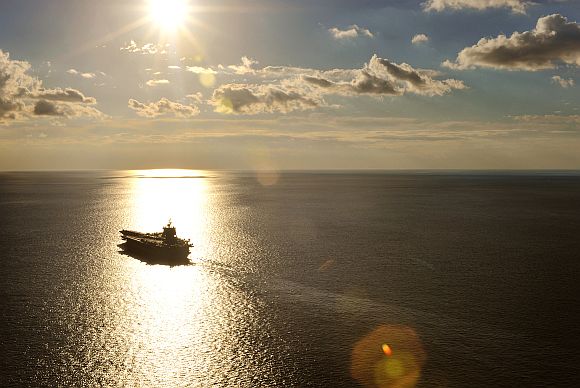
More Enterprise STATS:
Daily Meals Served Underway: 20,000+
Services: General store, 2 gyms, 2 barber shops, laundromat, print shop, chapel, library, television station and studio, coffee shop, daily newspaper distributed underway